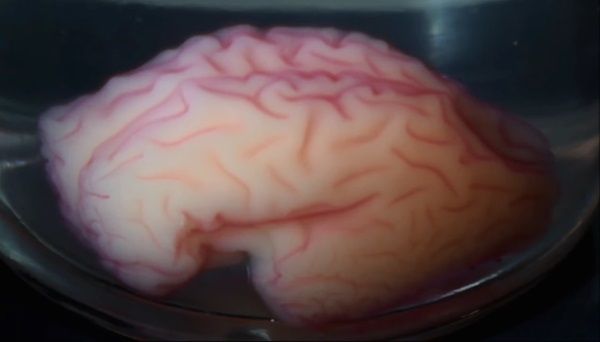Page 11663
Feb 4, 2016
BREAKING: An Injectable HIV Treatment Could Be Ready By 2017
Posted by Shailesh Prasad in categories: biotech/medical, innovation
CytoDyn Inc. announced in a news release last week that its ongoing extension study of PRO 140 monotherapy has shown “complete viral-load suppression” for well over a year, with some patients approaching 17 months. The phase I trial included 23 patients.
“The company believes that complete virologic suppression through treatment with a single agent, PRO 140, a safe and efficacious antibody, rather than through the widely used HAART combination therapy, could present a significant opportunity to treat HIV patients. Based on these monotherapy results, the company plans to file a second Phase 3 protocol for PRO 140 monotherapy with the FDA. CytoDyn is currently conducting a pivotal phase 3 trial for PRO 140 as an adjunct therapy with expected commercialization in 2017.”
On Jan 22, the company filed a request for Breakthrough Therapy Designation with the FDA for PRO 140 as a treatment for HIV-1 infection in treatment experienced patients with virologic failure, meaning other medications alone no longer work for them.
Feb 4, 2016
Film coating transforms contact lenses into computer screens
Posted by Shailesh Prasad in categories: computing, entertainment, wearables
A polymer film coating with the ability to turn contact lenses into computer screens is set to transform the wearable visual aids into the next generation of consumer electronics.
Feb 4, 2016
Mental Miscues
Posted by Karen Hurst in categories: biotech/medical, computing, engineering, neuroscience
Very interesting discovery about how our brain thinks; our brain isn’t always 100% error proof according to this report from Carnegie Mellon University. Therefore, when researchers are mapping the brain plus mimicking human brain functions; what is the tolerance level for error allowed then?
 A study conducted at Carnegie Mellon University investigated the brain’s neural activity during learned behavior and found that the brain makes mistakes because it applies incorrect inner beliefs, or internal models, about how the world works. The research suggests that when the brain makes a mistake, it actually thinks that it is making the correct decision—its neural signals are consistent with its inner beliefs, but not with what is happening in the real world.
A study conducted at Carnegie Mellon University investigated the brain’s neural activity during learned behavior and found that the brain makes mistakes because it applies incorrect inner beliefs, or internal models, about how the world works. The research suggests that when the brain makes a mistake, it actually thinks that it is making the correct decision—its neural signals are consistent with its inner beliefs, but not with what is happening in the real world.
“Our brains are constantly trying to predict how the world works. We do this by building internal models through experience and learning when we interact with the world,” said Steven Chase, an assistant professor in the Department of Biomedical Engineering and the Center for the Neural Basis of Cognition. “However, it has not yet been possible to track how these internal models affect instant-by-instant behavioral decisions.”
Feb 4, 2016
Purifying Water with Leaf-mimicking Device
Posted by Karen Hurst in categories: food, materials, solar power, sustainability
New method to make purify water and eliminate clean water shortages in the future by purifying waste water via artificial leafing.
 For years, scientists have been pursuing ways to imitate a leaf’s photosynthetic power to make hydrogen fuel from water and sunlight. In a new twist, a team has come up with another kind of device that mimics two of a leaf’s processes — photosynthesis and transpiration — to harness solar energy to purify water. Their development, reported in the journal ACS Applied Materials & Interfaces, could help address issues of water scarcity.
For years, scientists have been pursuing ways to imitate a leaf’s photosynthetic power to make hydrogen fuel from water and sunlight. In a new twist, a team has come up with another kind of device that mimics two of a leaf’s processes — photosynthesis and transpiration — to harness solar energy to purify water. Their development, reported in the journal ACS Applied Materials & Interfaces, could help address issues of water scarcity.
More than 1 billion people around the world live in areas where clean water is hard to come by, and that number will likely rise as the population grows.
Continue reading “Purifying Water with Leaf-mimicking Device” »
Feb 4, 2016
Scientists Discover How the Human Brain Folds
Posted by Shailesh Prasad in category: neuroscience
Scientists were able to study brain growth using a 3D gel model in order to see how the human brain gets its folds.
New research shows that our brains are likely folded because, as they grow, a large amount of volume has to fit in a small space (AKA, our skulls). This compression is actually beneficial, the folds reduce the length of neuronal wiring, improving cognitive function.
Researchers at the Harvard John A. Paulson School of Engineering and Applied Sciences teamed up with scientists in Finland and France to find out more about the folding process.
Feb 4, 2016
HoloLens Could Reinvent How We Watch Football
Posted by Shailesh Prasad in category: augmented reality
Feb 4, 2016
A designer created a projector that completely changes faces
Posted by Shailesh Prasad in category: futurism
Feb 4, 2016
DNA used to assemble nanoparticles into a copy of the crystalline structure of diamond
Posted by Karen Hurst in categories: biotech/medical, computing, materials, nanotechnology, particle physics
Building building diamond lattices through DNA.
Using bundled strands of DNA to build Tinkertoy-like tetrahedral cages, scientists at the U.S. Department of Energy’s Brookhaven National Laboratory have devised a way to trap and arrange nanoparticles in a way that mimics the crystalline structure of diamond. The achievement of this complex yet elegant arrangement, as described in a paper published February 5, 2016, in Science, may open a path to new materials that take advantage of the optical and mechanical properties of this crystalline structure for applications such as optical transistors, color-changing materials, and lightweight yet tough materials.
“We solved a 25-year challenge in building diamond lattices in a rational way via self-assembly,” said Oleg Gang, a physicist who led this research at the Center for Functional Nanomaterials (CFN) at Brookhaven Lab in collaboration with scientists from Stony Brook University, Wesleyan University, and Nagoya University in Japan.
Feb 4, 2016
MIT engineers have developed a new kind of RFID chip that’s nearly impossible to hack
Posted by Karen Hurst in categories: cybercrime/malcode, materials, security
Non-hackable RFIDs
You might not realize it, but radio frequency identification (RFID) tech is everywhere these days. From the cards in your wallet, to inventory control in warehouses, it’s the technology that works behind the scenes to power the world around you. RFID has brought efficiency to complicated industries and makes our tiny devices and everyday carry items speak to each other. But RFID technology has also been very vulnerable to security attacks and information hackers – until now. A team of researchers from MIT and Texas Instruments have developed a new kind of RFID chip that they believe is impossible to hack.
The new RFID chip is made of ferroelectric crystals, which are material made up of molecules arranged in a lattice pattern across three dimensions. Thanks to this unique structure, when you apply electricity to the lattice, each cell can be polarized as either positive or negative, representing the values of a bit of information. Because the cells retain their polarization when the electric field is removed, the chips can store data even when they’re powered off. Texas Instruments developed a series of 3.3-volt capacitors for the chip’s energy source, and 1.5-volt cells for data storage.
















